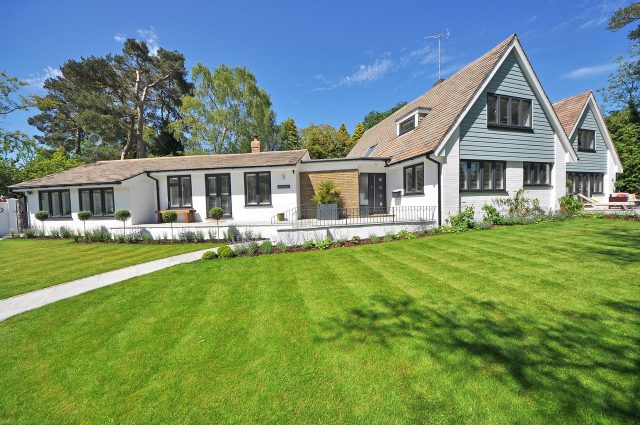
Freeholder Building Insurance: A Must-Have for Property Owners
As a freeholder, the world of insurance can seem like an intricate maze. At the forefront of your insurance needs is Freeholder Building Insurance. This coverage is not just a requirement; it’s a shield that protects the financial well-being of your property. It covers damages to the physical structure of your property, from the foundations to the roof, including permanent fixtures and fittings.
Freeholders Buildings Insurance is even more critical, especially when dealing with multiple units in a block of flats.
Why Freeholder Building Insurance Matters
- Legal Responsibility: If you own a block of flats, it’s your legal duty to have Buildings Insurance Cover. Failing to do so could expose you to high repair costs and legal fees.
- Comprehensive Protection: This insurance covers everything from accidental damage to providing alternative accommodation if the property becomes uninhabitable.
- Leaseholder Peace of Mind: While leaseholders are responsible for their own contents insurance, as a freeholder, providing a robust Buildings Insurance Policy reassures them that the building they live in is well-protected.
Key Considerations in Arranging Buildings Insurance
Precision and foresight are crucial When Arranging Buildings Insurance, particularly for a block of flats. Here are some essential factors to consider:
- Adequate Cover: Ensure your policy provides comprehensive coverage for the entire building, including flats insurance coverage for individual units.
- Professional Valuation: The insurance provider should base the cover level on a professional valuation, adjusted regularly to keep up with rebuilding costs.
- Cost Sharing: Typically, the cost of the building insurance is shared among leaseholders through the Service Charge. This makes it affordable and ensures everyone contributes to the common good.
The Role of Freeholder Buildings Insurance in Property Management
For any property management company, having the right freeholder building insurance Coverage is a cornerstone of responsible management. It safeguards the property and ensures that you, as a property owner, can fulfil your obligations without financial strain.
- Joint Freeholder Building Insurance: If you co-own a property, this insurance simplifies the process and ensures equitable coverage.
- Landlord Insurance: Essential for those renting out multiple flats, combining building insurance with liability and loss of rent coverage.
- Liability Cover: Protects you against claims if someone is injured on your property.
- Terrorism Insurance: An often overlooked but important aspect of comprehensive coverage.
Building a Strong Insurance Foundation for Your Property
Whether it’s a single freehold property or a complex block of flats, Freeholder Building Insurance is not just an option—it’s a necessity for safeguarding your investment. In the following sections, we will delve deeper into the intricacies of building insurance for Freeholders, including Leasehold Properties, Service Charges, and additional aspects of insurance like Contents Cover and In-House Claims Teams.
The Process of Buildings Insurance – How it Works
Initiating the process of buildings insurance begins with an accurate valuation of the property, taking into account the construction costs and the value of installed fixtures. Property owners leverage this assessment to select an insurance policy that provides adequate coverage for potential damages and losses.
Subsequently, property owners engage in a thorough comparison of various insurance providers. This comparison emphasizes the examination of policy specifics, premium amounts, and the breadth of coverage. Paramount in this evaluation are the types of risks covered, such as natural disasters, fire, or vandalism, and the detailed terms and conditions of each policy.
Following this, property owners complete the requisite documentation, supplying comprehensive information about the property and any specific stipulations. Meticulous attention to detail in this phase is essential for securing extensive coverage.
After the submission of the application, there is generally a period of anticipation for the insurance company’s approval. This interval may include further inquiries or property inspections by the insurer to confirm the property’s status and associated risks.
Upon approval, property owners are issued the policy documents, which signifies the culmination of the insurance arrangement process. It is important to periodically review and update the policy, especially in response to significant alterations to the property or changes in its use.
Tailoring to Your Needs
Every property is unique, and so are its insurance requirements. Appropriate Insurance Cover is not a one-size-fits-all solution. It’s essential to assess the specific needs of your property, whether it’s a single dwelling or a block of flats, to ensure comprehensive protection. Freehold Buildings Insurance plays a pivotal role in covering risks specific to the building’s structure and external fixtures.
Third-Party Liability Cover: An Essential Safeguard
Third-Party Liability Cover is a critical component of Freeholder Insurance. It protects against claims made by third parties for injuries or damage occurring on your property. This is especially important in properties with common areas where the risk of accidents is higher.
Liability Insurance is not just a precaution; it’s a financial safety net, protecting you from potentially significant legal costs and settlements.
Freeholder Insurance for Leasehold Properties
As a freeholder of a Leasehold Property, it’s crucial to understand that while the leaseholder might be responsible for their interior space, the external and structural integrity of the building falls under your jurisdiction. This includes flat building insurance, ensuring that all parts of the property are adequately covered.
Service Charges and Insurance: A Balanced Approach
The Service Charge often includes a portion of the Building’s Insurance Costs, making it transparent and manageable for leaseholders. It’s important to clearly communicate with leaseholders what their service charges cover, especially regarding Buildings Insurance.
Tailoring Freehold Buildings Insurance to Your Property
Customized Coverage
Freehold Buildings Insurance should be tailored to the specific needs of your property. This includes assessing risks like location-specific issues (e.g., flood zones) and the type of tenants occupying the flats.
Flats Buildings Insurance Cover: Ensuring Every Corner is Covered
When it comes to flats, the Flats Buildings Insurance Cover is crucial. It should encompass all common areas and individual units, providing a safety net against unforeseen damages like fire or water damage.
Comprehensive Freeholder Insurance: Beyond the Basics
A comprehensive Freeholder Insurance plan goes beyond just covering the building’s structure. It should also include aspects like Alternative Accommodation Costs for tenants in case the property becomes uninhabitable and Accidental Damage cover for unforeseen incidents.
The Role of Freeholder Insurance in Property Management
Effective property management is heavily reliant on the right insurance cover. Property Management Companies often recommend robust Freeholder Insurance plans to their clients, ensuring that all aspects of the property are protected, from the physical structure to liability concerns.
Concluding Thoughts
As we’ve explored, Freeholder Building Insurance is a multifaceted and essential aspect of property ownership. It protects against various risks, from structural damage to liability claims. In the next section, we will delve into additional aspects of Freeholder Building Insurance, including Contents Cover, In-House Claims Teams, and the nuances of Service Charges about insurance.
Remember, the right Freeholder Insurance isn’t just a regulatory requirement; it’s a cornerstone of responsible property ownership and management. Stay informed, choose wisely, and ensure your property is protected under comprehensive Freeholder Building Insurance.
Additional Facets of Freeholder Building Insurance
Protecting Your Investment: Contents Cover and In-House Claims Teams
Contents Cover: While Freeholder Building Insurance focuses on the physical structure, leaseholders need to consider their own Contents Insurance. This covers personal belongings inside their flats, complementing the broader building insurance.
In-House Claims Team: Opting for a policy with an In-House Claims Team can significantly streamline the claims process. They offer expert guidance and support, ensuring claims are handled efficiently and effectively, reducing the stress and complexity involved in navigating insurance claims.
Insurance for Communal Areas and Service Charges
Insurance for Communal Areas: Freeholder Buildings Insurance should extend to communal areas like hallways, gardens, and shared facilities. This ensures all aspects of the property, not just individual flats, are protected under the insurance policy.
Service Charges and Insurance Costs: The cost of Freeholder Buildings Insurance is often included in leaseholders’ Service Charges. Transparency and clear communication about these charges are essential, ensuring leaseholders understand their contributions towards the collective insurance cover.
Ensuring Robust Coverage: The Final Checkpoints
Revisiting Your Policy Regularly: The needs of a property can evolve, and so should its insurance cover. Regular reviews and adjustments to your Freeholder Buildings Insurance ensure you remain protected against all risks.
Professional Advice: Seeking professional advice can be invaluable in navigating the complexities of Freeholder Building Insurance. Experts can help tailor a policy to your needs, ensuring comprehensive coverage.
Building a Resilient Future: Investing in the right Freeholder Buildings Insurance is an investment in the resilience and longevity of your property. It ensures peace of mind and financial protection against a multitude of risks.
Navigating Freeholder Building Insurance can be complex, but it’s an essential part of responsible property ownership. By understanding the various components, from Third-Party Liability Cover to Flats Buildings Insurance, and regularly reviewing your policy, you can ensure your property is adequately protected.
Remember, the right insurance policy is more than a compliance checkbox; it’s a vital safeguard for your property’s future.
Frequently Asked Questions
Q: What does freeholders building insurance cover?
A: Freeholders Building Insurance typically covers the cost of repairing or rebuilding the building’s structure, including roofs, floors, walls, and permanent fixtures. It also often includes cover for common areas, accidental damage, and may provide alternative accommodation for tenants if necessary.
Q: Do I need buildings insurance for a freehold flat?
A: Yes, if you own a freehold flat, you need Buildings Insurance to cover the structural aspects of the property. This is usually arranged by the freeholder and the cost is shared among leaseholders through service charges.
Q: Is building insurance freeholder or leaseholder responsibility?
A: Building Insurance is typically the freeholder’s responsibility, covering the building’s structure and common areas. Leaseholders are responsible for their own contents insurance and contribute to the building insurance cost through their service charges.













